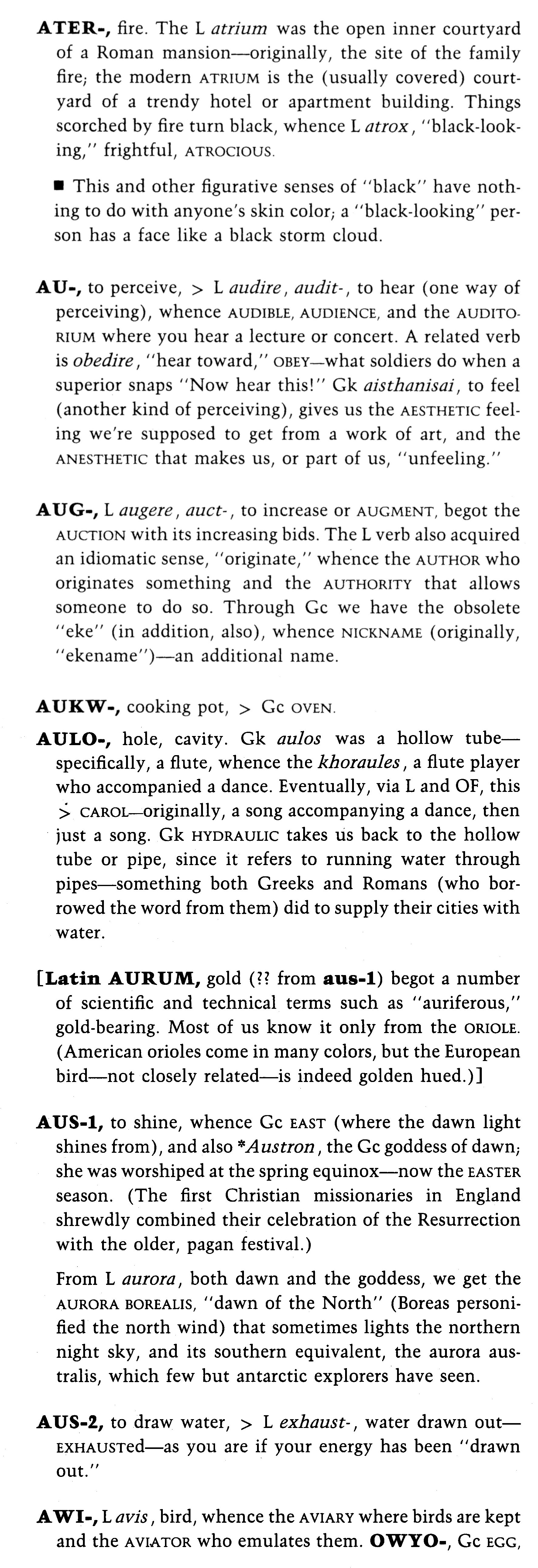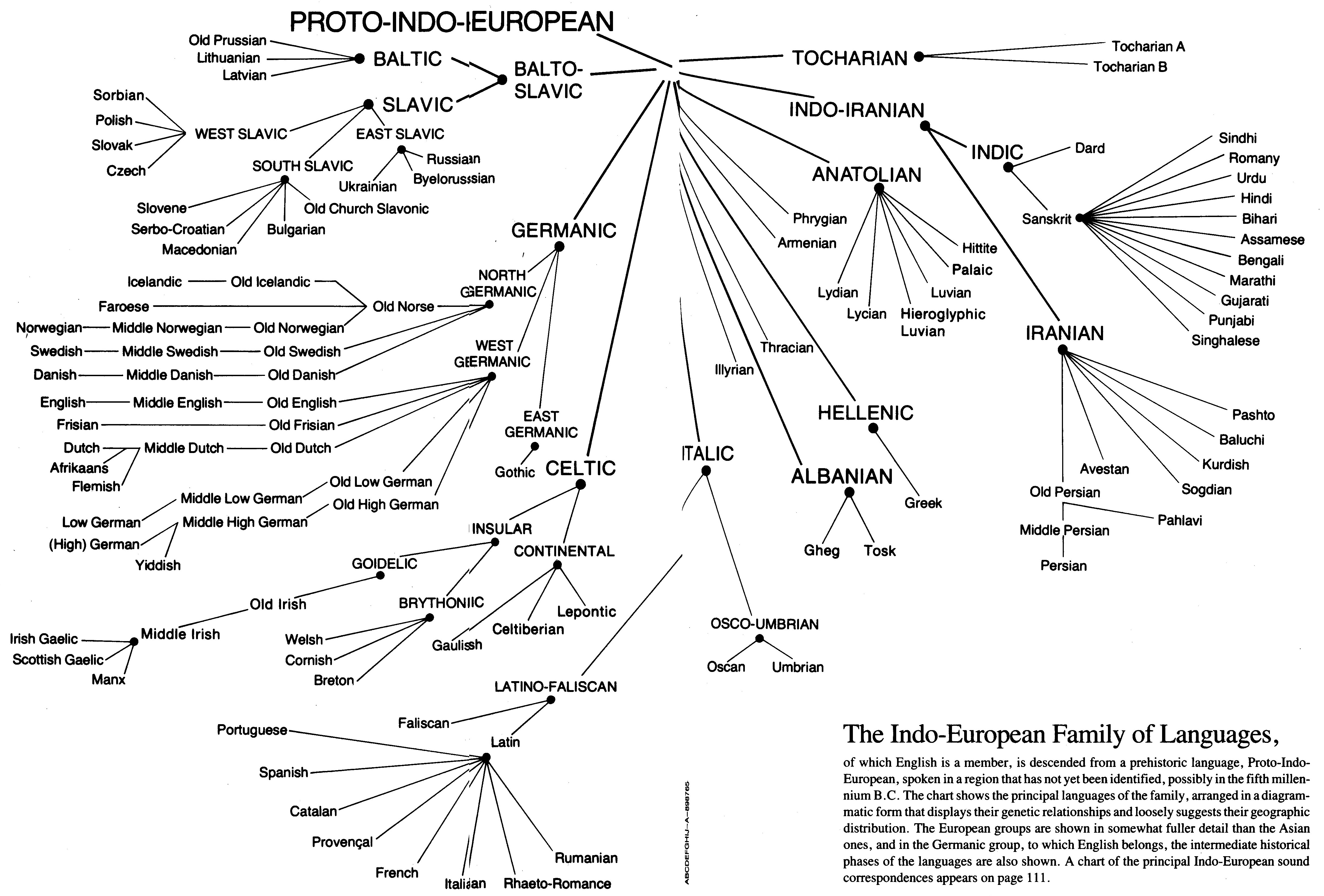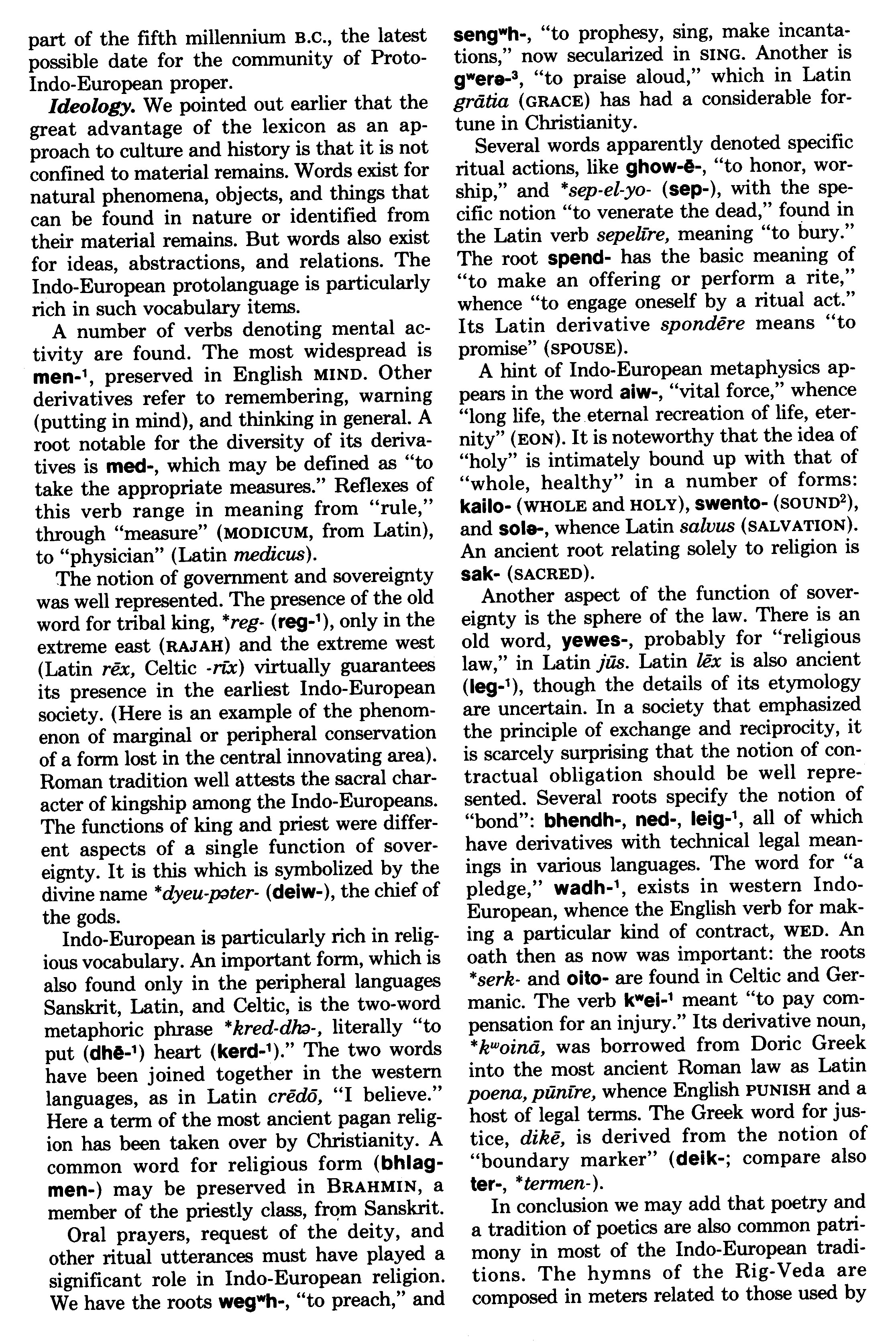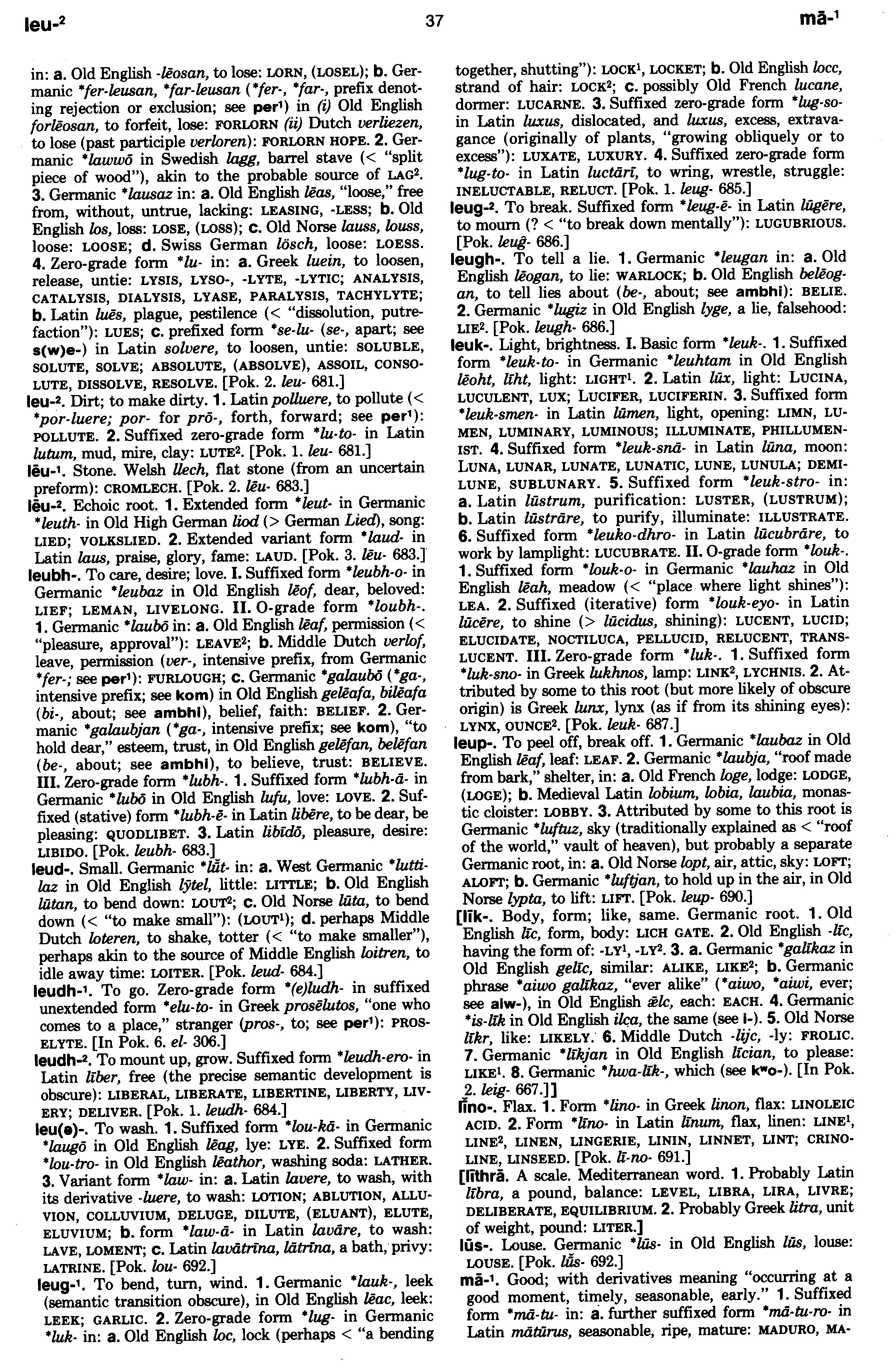It’s such fun to go chasing after the narratives of language evolution and distribution, via books like Nicholas Ostler’s Empires of the Word: A Language History of the World (which is global in scope and well illustrated with maps, and has a fine ear for illustrative quotations from many languages), Kenneth Katzner’s The Languages of the World (which offers brief characterizations of about 200 languages, with exemplary texts), Merritt Ruhlen’s A Guide to the World’s Languages: Volume I, Classification (which is especially concerned with taxonomy of 17 major language families and their subgroupings), and Florian Coulmas’ The Writing Systems of the World (which takes on graphic representations of sound systems, mostly ignored by linguistics). I can’t claim to have assimilated any of these, but I’ve been in and out of all of them quite a bit in the last 40-odd years.
Thinking back through a few thousand years of linguistic history is a rainy-day delight:
Robert Claiborne’s The Roots of English: A Reader’s Handbook of Word Origins is mostly concerned with Indo-European roots in English words (“…two thousand or so basic Indo-European roots have been reconstructed… (which) begot at least ten times that number of actual words…”). Germanic, Latin, French and Greek (all in the Indo-European family) are the primary contributors to the English we use.

Another fascinating resorce for IE: The American Heritage Dictionary of Indo-European Roots “enlarges upon the history of 13,000 English words, spanning over 5000 years from Indo-European to Modern English” (cover blurb)

Two pages suggest the riches of Watkins:


The historical epic of the development of modern English (its Anglo-Saxon roots, Norman additions, Latin and Greek ecclesiastical and scholarly elements) are recent enough and well attested in sources like the always-interesting History of English Podcast, but the Indo-European and Germanic background to English is further back in the mists of time, and less well-known. English is, after all, a Germanic language in its grammatical and syntactical organization (“English sentences are organized with GERMANIC grammar. Subject first, verb after. Prepositional phrases, pronouns, and verb tenses are all used in the Germanic style. English sentences use, the same rules that are used for sentence construction in German and Dutch, Swedish and Icelandic, Norwegian and Danish…”), and in the majority of its high-frequency words, so it’s worthwhile to include explanatory videos like
and
(though the accompanying music is turnable-off…)
See also Wikipedia’s list of Germanic and Latinate equivalents, and note Poul Anderson’s essay “Uncleftish Beholding” (“Atomic Theory”), which “shows what English would look like if it
were purged of its non-Germanic words, and used German-style compounds instead of borrowings to express new concepts”:
For most of its being, mankind did not know what things are made
of, but could only guess. With the growth of worldken, we began
to learn, and today we have a beholding of stuff and work that
watching bears out, both in the workstead and in daily life.The underlying kinds of stuff are the *firststuffs*, which link
together in sundry ways to give rise to the rest. Formerly we
knew of ninety-two firststuffs, from waterstuff, the lightest and
barest, to ymirstuff, the heaviest. Now we have made more, such
as aegirstuff and helstuff.The firststuffs have their being as motes called *unclefts*.
These are mightly small; one seedweight of waterstuff holds a
tale of them like unto two followed by twenty-two naughts. Most
unclefts link together to make what are called *bulkbits*. Thus,
the waterstuff bulkbit bestands of two waterstuff unclefts, the
sourstuff bulkbit of two sourstuff unclefts, and so on. (Some
kinds, such as sunstuff, keep alone; others, such as iron, cling
together in ices when in the fast standing; and there are yet
more yokeways.) When unlike clefts link in a bulkbit, they make
*bindings*. Thus, water is a binding of two waterstuff unclefts
with one sourstuff uncleft, while a bulkbit of one of the
forestuffs making up flesh may have a thousand thousand or more
unclefts of these two firststuffs together with coalstuff and
chokestuff.At first is was thought that the uncleft was a hard thing that
could be split no further; hence the name. Now we know it is made
up of lesser motes. There is a heavy *kernel* with a forward
bernstonish lading, and around it one or more light motes with
backward ladings. The least uncleft is that of ordinary
waterstuff. Its kernel is a lone forwardladen mote called a
*firstbit*. Outside it is a backwardladen mote called a
*bernstonebit*. The firstbit has a heaviness about 1840-fold that
of the bernstonebit. Early worldken folk thought bernstonebits
swing around the kernel like the earth around the sun, but now we
understand they are more like waves or clouds.In all other unclefts are found other motes as well, about as
heavy as the firstbit but with no lading, known as *neitherbits*.
We know a kind of waterstuff with one neitherbit in the kernel
along with the firstbit; another kind has two neitherbits. Both
kinds are seldom…
…and see this venture into Anglish:
…and this, just in, about grammatical case.